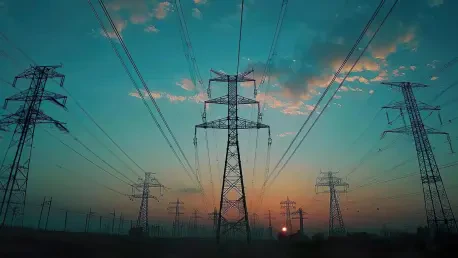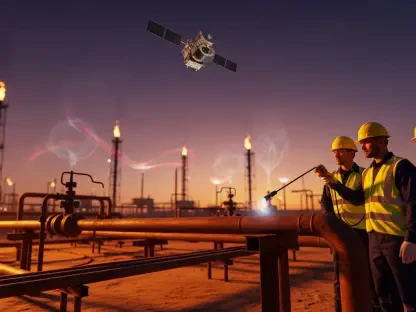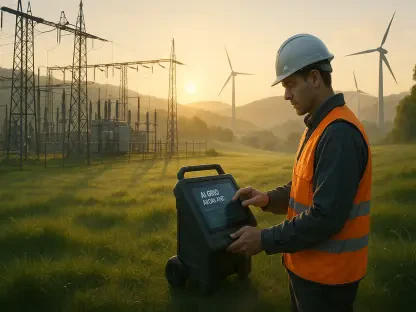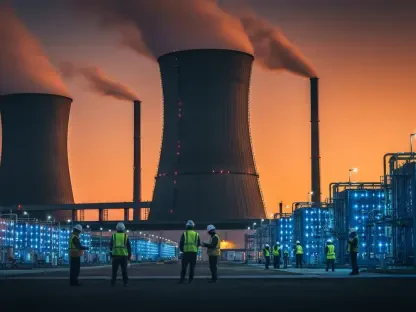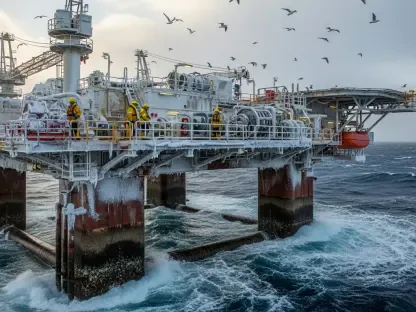In today’s interview, we delve into the intricacies of Europe’s energy landscape with Christopher Hailstone, a seasoned expert in energy management and grid infrastructure. His wealth of experience in renewable energy and electricity delivery provides a unique lens through which we can understand the challenges facing Europe’s power systems, particularly in light of recent events affecting Spain and Portugal. As we navigate topics such as aging infrastructure, digital protection, and inter-state connections, we gain valuable insights into the future of energy security and sustainability.
What were the main causes behind the recent blackout in Spain and Portugal?
The blackout in Spain and Portugal was indeed a significant event, highlighting vulnerabilities in our power systems. While investigations are ongoing, it seems there were two separate incidents that triggered the massive outage. These types of blackouts often underline critical issues such as outdated infrastructure and insufficient backup power systems. It serves as a reminder that modernization and reinforcement of the electricity grid are more urgent than ever.
How old is the current power grid infrastructure in Europe, and why is this a concern?
Europe’s power grid mostly dates back to the previous century, with nearly half the lines being over 40 years old. This aging infrastructure is struggling to accommodate the demand from burgeoning green energy sources and the rapid increase in electricity consumption. The concern is two-fold: it’s not just about upgrading old equipment, but also about integrating new technologies to ensure reliability and efficiency in meeting contemporary energy needs.
What role does digital protection play in modernizing the power grid?
Digital protection is becoming essential for modernizing power grids. As we switch to more interconnected and automated systems, the risk of cyber attacks increases. Implementing robust cybersecurity measures ensures the integrity and resilience of the grid, protecting it from disruptions that could lead to massive outages. Digitalization also aids in more intelligent and flexible grid operations, allowing for real-time monitoring and control.
How has investment in renewables compared to investment in grid infrastructure since 2010?
Investment in renewables has nearly doubled since 2010, indicating robust growth in this sector. However, investment in grid infrastructure has remained relatively static—at about $300 billion annually—to the point where it could hamper further renewable expansion. A significant increase in investment in grids is necessary to handle this surge in renewable production, with projections suggesting a need to double spending by 2030.
What is the estimated investment needed for grid upgrades by 2050 according to the European Commission?
The European Commission estimates that Europe needs to invest between $2.0 to $2.3 trillion in grid upgrades by 2050. This is an enormous financial commitment and highlights both the scale and necessity of such undertakings to ensure grid reliability amid rising energy demands and the transition towards renewable sources.
Why are Spain and Portugal’s power systems particularly vulnerable to blackouts?
One of the key vulnerabilities is the lack of interconnections with other grids, which limits backup options during outages. Spain and Portugal’s systems are relatively isolated, with only a small percentage of their grid connected externally. This isolation means any fluctuations in energy production or demand could lead to significant instability, underscoring the need for enhanced interconnections with neighboring countries.
Can you elaborate on the importance of inter-state connections in Europe’s power grid?
Inter-state connections are vital for ensuring the stability and resilience of Europe’s power grid. They enable cross-border energy exchange and provide essential backup capacity in case of localized outages. Moreover, they facilitate more efficient energy distribution, balancing load demands across the continent and supporting the integration of renewable energies that may not be uniformly distributed.
What are the current plans in Spain for increasing grid connections with neighboring countries?
Spain is actively working on bolstering connections with its neighbors, particularly France. One notable project is a new link via the Bay of Biscay, which will significantly enhance interconnection capacity between the countries. Such initiatives are crucial for alleviating some of the grid isolation challenges, allowing for greater energy security and more robust backup resources.
How does the conversion between direct current and alternating current affect grid stability?
The conversion between DC and AC is a critical component of grid stability. Renewable sources like solar and wind generate DC power, which must be converted to AC for grid compatibility. This conversion process can introduce inefficiencies and requires precise management to maintain a stable frequency. If this frequency drops, automatic safety mechanisms can disconnect some generation to prevent further issues, leading to potential blackouts.
What are the possible risks of Spain phasing out all seven of its nuclear reactors by 2035?
Phasing out nuclear reactors presents several risks, foremost among them being reduced backup power availability. Nuclear energy provides a reliable and continuous supply of electricity, crucial for balancing intermittent renewable sources. Without these reactors, Spain will need to find alternative ways to maintain grid stability and meet demand during periods of low renewable generation output.
How does the frequency of the power grid relate to the risk of blackouts?
Grid frequency is key to maintaining operational stability. Fluctuations can lead to automatic safety shutdowns of certain segments, as they risk causing damage to infrastructure. These shutdowns, if numerous or significant enough, can result in widespread blackouts. Therefore, maintaining a steady frequency across the grid is fundamental to preventing power outages.
What are the limitations of Portugal’s current back-up generation capacity?
Portugal’s backup generation capacity is limited, relying primarily on just two plants—a gas and a hydro facility. While these can respond quickly to demand surges, the small number of backup options restricts the resilience of the grid. Expanding this capacity is critical to enhancing Portugal’s ability to manage unexpected demand spikes or disruptions.
How has Britain responded to its own blackout challenges since 2019?
Since the blackout of 2019, Britain has taken decisive steps to enhance grid stability, notably by expanding battery storage capabilities. This increase has helped balance the grid similar to traditional power plants, smoothing out fluctuations and providing a buffer against outages. With around 5 gigawatts of installed battery capacity, Britain is better equipped to handle variations in power production.
What role can battery storage play in addressing grid instability, and what is the current capacity?
Battery storage offers crucial solutions to grid instability by providing rapid-response reserves capable of moderating fluctuations in energy supply and demand. Europe currently has 10.8 gigawatts of battery storage capacity, and efforts are underway to expand this to 50 gigawatts by 2030. However, projections suggest 200 gigawatts are needed to adequately support the growing renewable energy sector.
What is the current status and future goal for battery storage capacity in Europe?
As of now, Europe holds a battery storage capacity of 10.8 gigawatts, with strategic plans to expand this to 50 gigawatts by 2030. Although this growth is substantial, it still falls short of the 200 gigawatts deemed necessary for a robust grid. Continued investment is vital for ensuring that storage capabilities keep pace with renewable energy developments and demand fluctuations.
Can you explain the significance of Siemens Energy’s flywheel project in Ireland and its impact on grid stability?
Siemens Energy’s flywheel project in Ireland is a groundbreaking initiative that enhances grid stability. The flywheel acts as a kinetic energy storage mechanism, providing instantaneous power to stabilize fluctuations. By smoothing out these disturbances, the project significantly contributes to maintaining the grid’s operational balance, serving as a model for similar projects across Europe.
How might these grid challenges impact the overall energy transition and reliance on renewable sources in Europe?
The success of Europe’s energy transition hinges on overcoming current grid challenges. If these obstacles persist, they could slow down the shift to renewable energy, posing risks to energy security and sustainability goals. Addressing infrastructure, interconnection, and storage needs is crucial for ensuring that the energy transition proceeds smoothly and efficiently.
Do you have any advice for our readers?
For readers interested in energy sustainability, it’s vital to advocate for and support initiatives related to modernizing and reinforcing grid systems. Being aware of how energy policies and investments shape our power landscape can empower individuals to make informed choices and push for advancements that align with a sustainable energy future.
